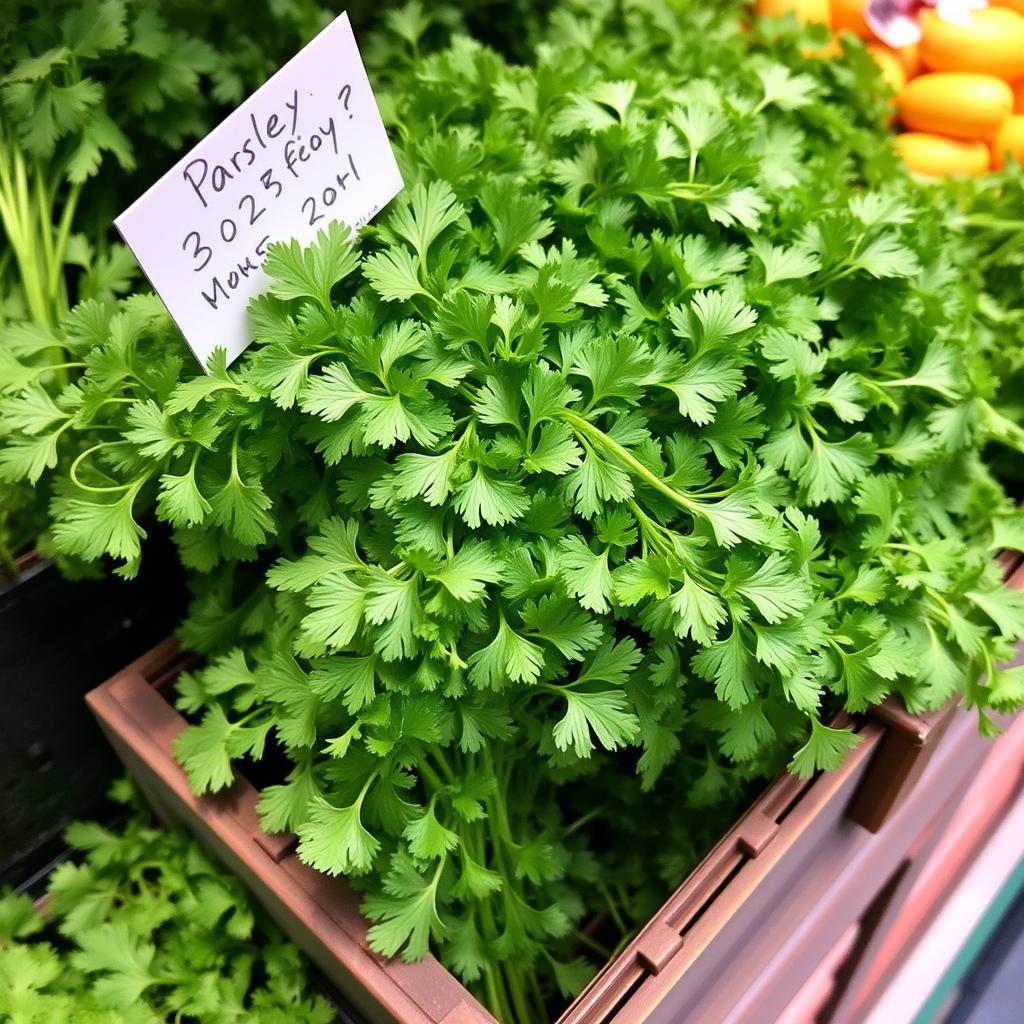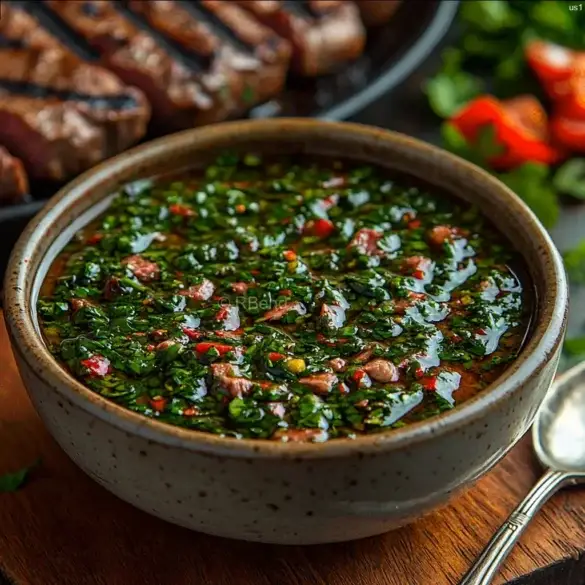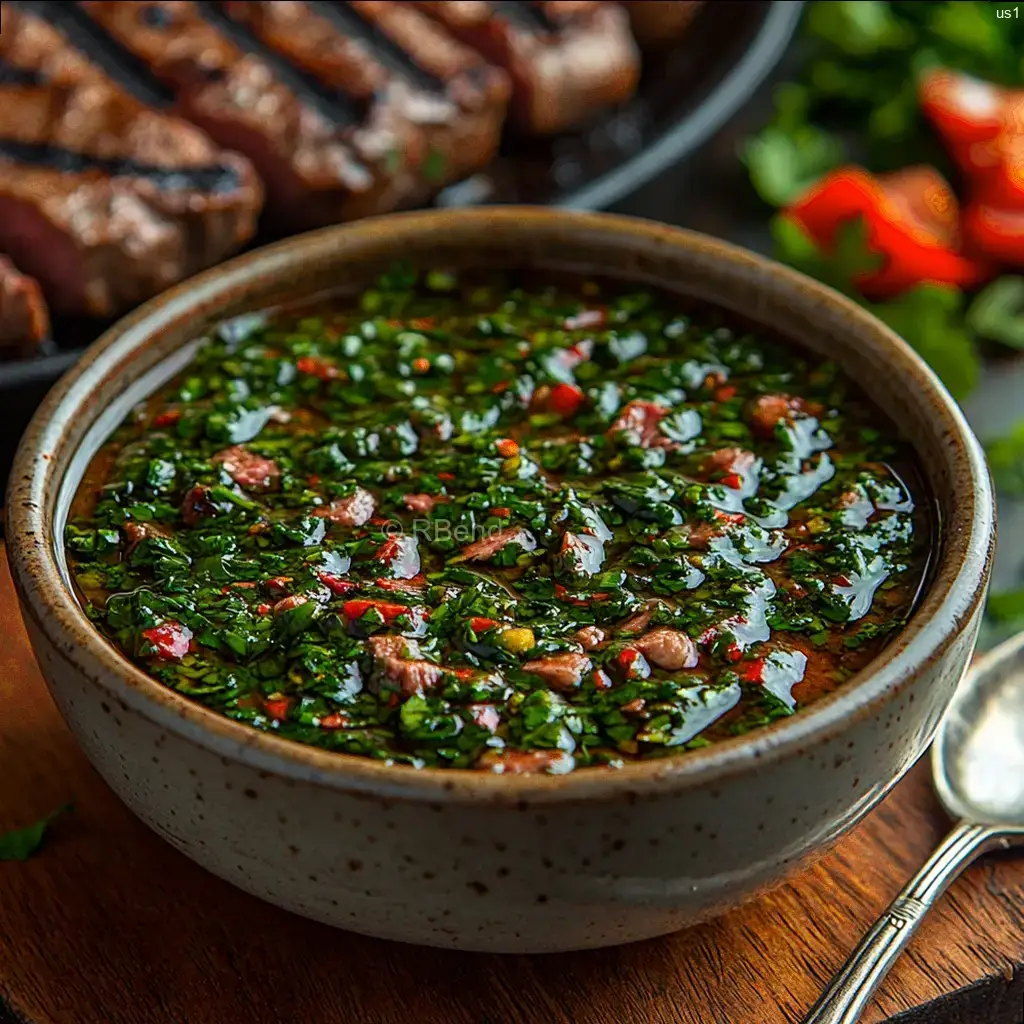Discover the vibrant flavors of Argentina with a classic chimichurri sauce, a condiment that elevates grilled meats and vegetables with its tangy, herbaceous taste. Originating from Uruguay and Argentina, this sauce is a staple in South American cuisine, typically made with olive oil, red wine vinegar, garlic, and a mix of fresh herbs like parsley and oregano.
You can easily make this delicious sauce at home using basic ingredients and minimal equipment. The beauty of homemade chimichurri lies in its customizability and the bright, clean flavors it delivers, unlike store-bought versions.
Whether you’re a seasoned cook or a kitchen novice, this simple recipe will guide you through creating a versatile condiment that complements a variety of dishes, from grilled chicken and steak to lamb and fish.
Key Takeaways
- Learn how to make authentic chimichurri with fresh herbs and simple ingredients.
- Understand the origins and traditional uses of chimichurri in South American cuisine.
- Discover tips for customizing the flavor to suit your taste preferences.
- Master storage techniques to keep your chimichurri fresh.
- Explore various ways to use chimichurri as a marinade or dipping sauce.
What is Chimichurri?
Chimichurri is a tangy and herby sauce originating from Argentina and Uruguay. This vibrant and uncooked condiment is a staple at any asado (barbecue) in its native countries.
Origins and Cultural Significance
Chimichurri sauce has its roots in Argentine and Uruguayan cuisine, where it’s served as a marinade or dipping sauce for grilled meats like steak, chicken, or lamb. The name “chimichurri” has several origin theories, including a possible derivation from Basque settlers or a corruption of the English phrase “give me curry.”
Why You’ll Love This Sauce
You’ll appreciate chimichurri‘s perfect balance of tangy, herbaceous, and garlicky flavor that brightens up proteins and vegetables alike. Unlike complex sauces, chimichurri requires no cooking and comes together in minutes, making it an easy way to elevate weeknight meals. The sauce’s oil-vinegar base means it keeps well in the refrigerator.
Essential Ingredients for Authentic Chimichurri Recipe
To make a truly authentic chimichurri, you’ll need to focus on the right ingredients. The quality and freshness of these components will significantly impact the flavor and overall experience of your chimichurri.

Fresh Herbs: Parsley and Oregano
Fresh parsley forms the foundation of authentic chimichurri, providing bright color and herbaceous flavor. You can find fresh parsley at most supermarkets or local farmers’ markets. Dried oregano adds earthy notes and complexity to the sauce. For the best flavor, consider using a mix of both fresh and dried herbs.
Aromatics: Garlic and Chili
Garlic is essential for authentic chimichurri, adding a sharp depth of flavor. Most recipes call for 2-4 cloves finely minced by hand. The heat element comes from red pepper flakes or fresh red chili peppers, which you can adjust according to your spice preference.
Liquids: Olive Oil and Vinegar
Extra-virgin olive oil serves as both a carrier and flavor contributor, so using a good quality oil will significantly impact your sauce’s final taste. Red wine vinegar provides the characteristic tanginess in traditional chimichurri, though some variations use white wine vinegar or lemon juice for a different flavor profile.
Equipment You’ll Need
The key to a great chimichurri lies in the preparation, starting with the right equipment. To make this Argentinean herb sauce, you’ll need a few basic tools that help in achieving the perfect texture and flavor.
Chopping vs. Food Processor
When it comes to chopping the herbs and aromatics, a sharp knife and cutting board are your best friends. While a food processor might seem like a convenient option, it can result in an over-processed, bitter paste. Hand-chopping allows the ingredients to retain their distinct texture, creating a loose, oil-based condiment. As a rule of thumb, aim for finely chopped herbs and aromatics to release their flavors without becoming too mushy.
Storage Containers
For mixing and serving your chimichurri, choose a non-reactive bowl, such as glass or ceramic, to prevent the acidic vinegar from interacting with the container. When it comes to storing your chimichurri, opt for glass containers with tight-fitting lids, like Mason jars, to preserve freshness and prevent refrigerator odors from seeping in. If you plan to freeze portions, consider using ice cube trays for convenient single-serving portions.

By using the right equipment and techniques, you’ll be able to create a delicious and authentic chimichurri that complements your grilled meats and vegetables perfectly.
How to Make Chimichurri Step by Step
To make authentic chimichurri, start by carefully preparing your fresh herbs and ingredients. This initial step is crucial for achieving the best flavor.
Preparing the Herbs
Begin by thoroughly washing and drying your fresh parsley and oregano. Remove the thick stems from the parsley, but keep the tender ones for added flavor. Finely chop the leaves using a sharp knife on a clean cutting board. Mince the garlic cloves and chili peppers into very small pieces to ensure their flavors distribute evenly throughout the sauce.
Mixing the Ingredients
Combine the chopped herbs, garlic, and chili peppers in a bowl. Pour in the olive oil and vinegar gradually while stirring to create an emulsion. Season with salt and pepper, starting with less than you think you need. You can always add more after tasting.
Resting Time for Maximum Flavor
Allow your chimichurri to rest for at least 30 minutes before serving. For the most developed flavor, let it sit at room temperature for a few hours or overnight in the refrigerator. This resting period is crucial as it allows the oil to extract flavor compounds from the herbs and spices, creating a more cohesive and potent sauce.
| Step | Action | Time |
|---|---|---|
| 1 | Prepare Herbs | 10 minutes |
| 2 | Mix Ingredients | 5 minutes |
| 3 | Resting Time | 30 minutes – Overnight |

Common Mistakes to Avoid
To ensure your chimichurri turns out fresh and flavorful, avoid these frequent mistakes. Making a great chimichurri sauce is not just about following a recipe, it’s about understanding the nuances that make it authentic.
Over-Processing the Herbs
One of the most common mistakes is using a food processor excessively, which can pulverize the herbs and release bitter compounds. Instead, chop the herbs finely by hand or use a brief pulse in a processor to preserve their freshness and texture.

Balancing the Flavors
Balancing the flavor is crucial. Be cautious with the amount of garlic you add initially, as you can always add more to taste. Also, watch your vinegar-to-oil ratio to avoid an overly acidic sauce. Don’t forget to add salt to bring out the flavors of the herbs and balance the acidity.
| Common Mistake | Impact on Chimichurri | Solution |
|---|---|---|
| Over-processing herbs | Releases bitter compounds, unpleasant texture | Chop by hand or brief pulse in processor |
| Too much garlic | Overpowering flavor | Add garlic gradually to taste |
| Incorrect vinegar-to-oil ratio | Overly acidic or bland sauce | Balance vinegar and oil to taste |
Delicious Ways to Use Chimichurri
Chimichurri is more than just a sauce for steak; it’s a culinary game-changer. This Argentinean condiment can transform a variety of dishes with its fresh, herbaceous flavor.
Traditional Pairings with Grilled Meats
Traditionally, chimichurri sauce is served with grilled steak, particularly skirt or flank cuts, where its acidity cuts through the richness of the meat. It’s also a great match for other grilled meats like chicken, lamb chops, and pork chops. The chimichurri sauce adds a burst of flavor to these proteins, making them more delicious.
Vegetarian and Vegan Options
For vegetarian and vegan dishes, you can drizzle chimichurri over grilled vegetables like zucchini, eggplant, or portobello mushrooms. It’s also delicious mixed into a potato salad or used as a marinade for tofu or tempeh, infusing plant-based proteins with bright, herbaceous flavor.
Creative Applications
Beyond traditional pairings, chimichurri sauce can be used in various creative ways. You can spread it on bread for sandwiches, mix it into scrambled eggs, or stir it into cooked grains like rice or quinoa. The versatility of chimichurri makes it a valuable addition to many recipes.

Variations of the Classic Chimichurri Recipe
Experimenting with the traditional chimichurri recipe can lead to some exciting variations. While the classic version is a staple in Argentine cuisine, modifying it can cater to different tastes and preferences.
Red Chimichurri
One popular variation is red chimichurri (chimichurri rojo), which incorporates red bell pepper and tomato, creating a sweeter and less herbaceous sauce with a vibrant red color. This version is perfect for those looking for a milder flavor.
Cilantro Chimichurri
For those who enjoy cilantro, replacing half or all of the parsley with fresh cilantro creates a variation popular in parts of South America, adding a citrusy note to the sauce.
Spicy Chimichurri
Spice lovers can increase the heat by adding more red pepper flakes or incorporating fresh hot peppers like jalapeños or serranos, making it ideal for those who prefer a spicier chimichurri.
Other variations include adding shallots or red onion for complexity, roasting garlic for a milder flavor, or experimenting with different vinegars like sherry vinegar or red wine vinegar for a unique taste.
Storing and Preserving Your Chimichurri
Proper storage techniques can significantly extend the shelf life of your chimichurri sauce. To maintain its freshness and flavor, you need to store it correctly.
Refrigeration Tips
When storing chimichurri in the fridge, use an airtight glass container to prevent interaction with plastic. Adding a thin layer of olive oil on top creates a seal that prevents oxidation, keeping your chimichurri fresh for up to one week. Although the vibrant green color may darken slightly, the flavor remains intact. If you notice separation, a quick stir will restore its consistency.
Freezing Methods
For longer storage, consider freezing your chimichurri sauce. Portioning it into ice cube trays allows you to thaw only what you need. Once frozen, transfer the cubes to freezer bags or containers and store for up to three months. When you’re ready to use it, thaw the frozen chimichurri in the fridge overnight to maintain food safety. This method ensures you always have fresh chimichurri on hand.
Conclusion
Now that you’ve learned to make chimichurri sauce, get ready to transform meals. With fresh parsley, garlic, and oregano, you’ll create a sauce that’s both tangy and savory. Store it properly and enjoy it throughout the week. Experiment with proportions to suit your taste, adding more garlic or red pepper flakes as desired. Your chimichurri will become a staple in your kitchen.
FAQ
How long does homemade chimichurri sauce last in the fridge?
Can I use dried herbs instead of fresh ones for making chimichurri?
Is chimichurri sauce suitable for vegetarians and vegans?
Can I adjust the level of spiciness in the chimichurri sauce?
How do I prevent my chimichurri from becoming too oily?
Can I make chimichurri in advance for a party or gathering?

Ingredients
- 1 cup fresh parsley
- ½ cup extra-virgin olive oil
- 2 tablespoons fresh oregano
- 2 tablespoons red wine vinegar
- 1 tablespoon water
- 1 jalapeño chile pepper, seeded
- 2 cloves garlic, chopped
- ½ teaspoon salt
- ½ teaspoon ground black pepper
Instructions
1- Add parsley, olive oil, oregano, red wine vinegar, water, jalapeño, garlic, salt, and pepper to a food processor.
2- Pulse until the mixture reaches your desired consistency.
3- Taste and adjust seasoning if needed.
4- Serve immediately or store in an airtight container.
Nutrition Information
Calories: 133
Fat: 14g
Carbohydrates: 1g
Protein: 0g
Quick Facts
Preparation Time: 10 min
Cooking Time: 0 min
Total Time: 10 min
Servings: 8
Difficulty: ⭐ (Very Easy)


